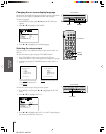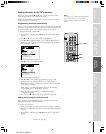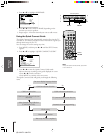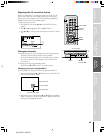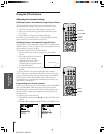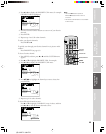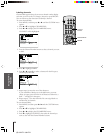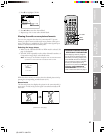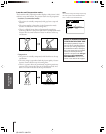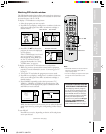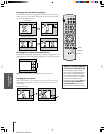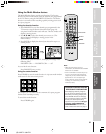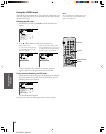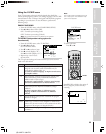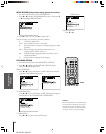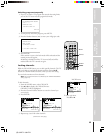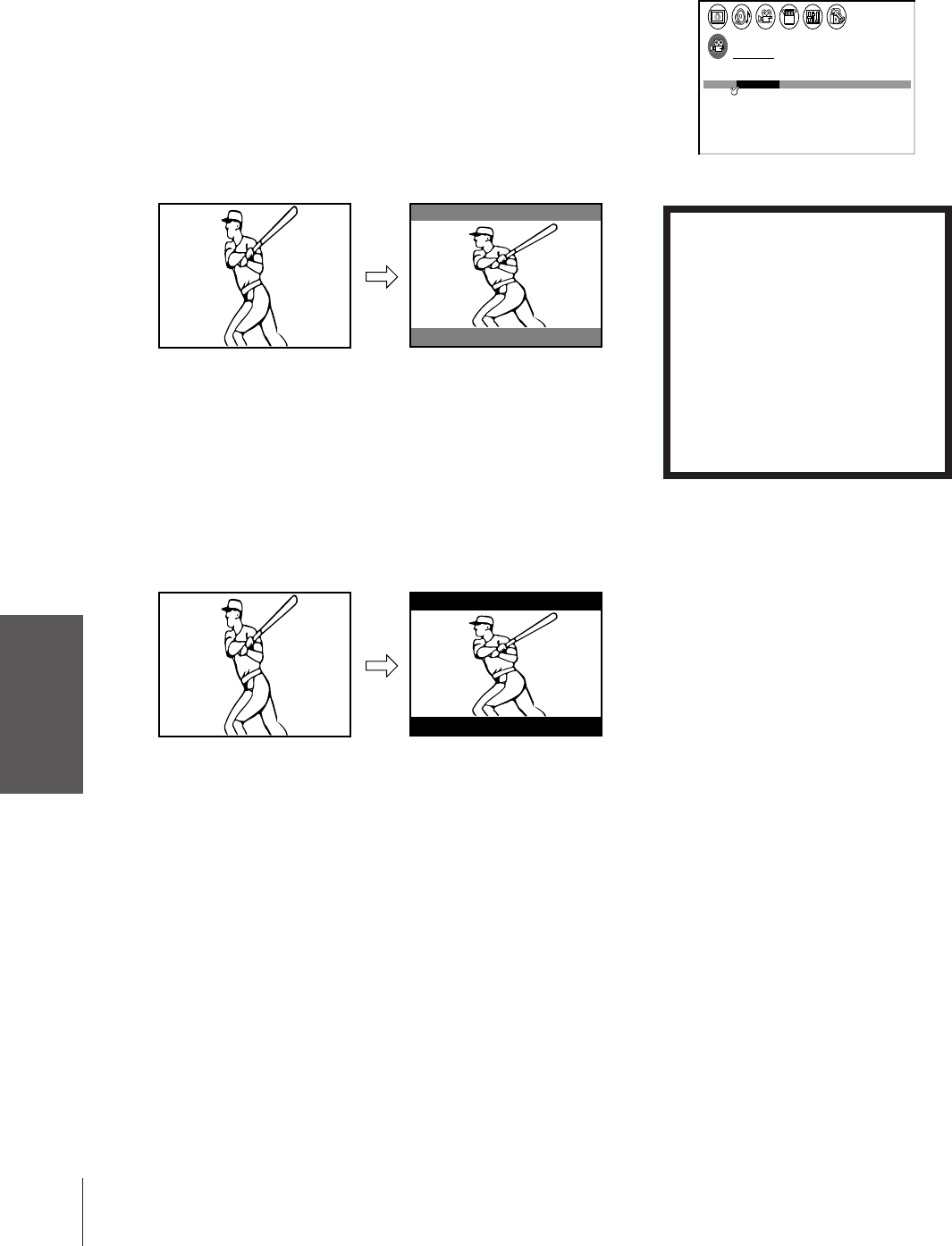
Introduction
Connecting
your TV
Using the
Remote Control
Setting up
your TV
Using the TV’s
Features
Appendix
Index
28
(E) 32HF72 36HF72
Letterbox and Compression modes
The Letterbox and Compression modes display a wide picture (16:9)
with bars at top and bottom. The picture retains its true proportion.
Letterbox (recommended mode):
• The picture is vertically compressed, with gray bars at top and
bottom.
• The picture quality is lower than in the Compression mode
because of a reduction in the scanning lines.
• There is a slightly lower chance of permanently engraining
stationary patterns in the picture tube than in Compression mode
because there is a small amount of raster in the bars at the top
and bottom.
Compression:
• The picture is vertically compressed, with black bars at the top
and bottom.
• The exact image is reproduced and the picture quality is better
because of more effective use of scanning lines.
• There is a greater chance of permanently engraining stationary
patterns in the picture tube than in the Letterbox mode, since
there is no raster in the bars at the top and bottom.
Note:
You can also change the image shape using
the menu system. Select IMAGE SHAPE
HD1 or HD2 in the THEATER menu.
THEATER
SRS 3D
I MAGE SHAPE
C I NEMA MODE V I DEO
HD1 NORMAL LTRBOX COMPRESS / /
NORMAL HD2
ON
Wide signal Letter box mode
Wide signal Compression mode
NOTICE OF POSSIBLE ADVERSE
EFFECTS ON TV PICTURE TUBE
Avoid displaying stationary images on
your TV screen for extended periods of
time. Fixed (non-moving) images (such
as still PIP/POP windows or black/gray
bars in wide-screen picture or PIP/POP
formats) can become permanently
engrained in the picture tube. This type
of damage is NOT COVERED BY
YOUR WARRANTY because it is the
result of misuse. See item 32 on page 4.



